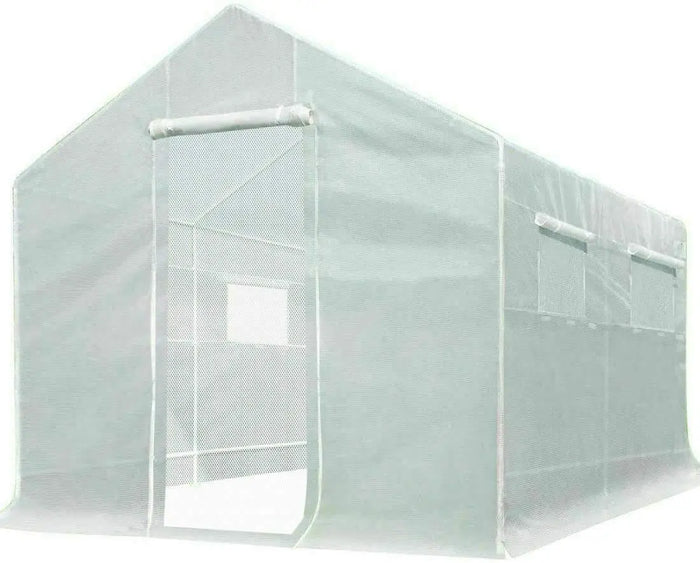Plants make you feel good about your living environment and they always bring you life, vitality, and hope. However, plants don't always look their best. Their state is not static and is always changing. Plants can feel unhappy too, they just can't cry like newborns.
They release signals that they are struggling with, and you need to understand these signals and take steps to make plants feel comfortable again. Otherwise, they will die and you will lose your favorite plants forever.
8 Signs that your plants are struggling and possible solutions
If you notice that your plants are looking bad or showing unusual signs, don't ignore them. Your plant may be unhappy or struggling. Learn the signs and know how to make your plants better.
Leaves turning yellow
Yellowing leaves are the easiest sign of an unusual plant to spot. There are many possible reasons for this problem, including low humidity, improper watering practices, insufficient light, improper fertilizer use, poor soil drainage, and low temperatures.

(leaves turning yellow)
If you notice that a plant's leaves are turning yellow, do not take blind action. Think first about how you usually take care of your plants. Or you can start by checking the soil moisture, as yellowing leaves are likely to be related to too much or too little moisture.
If you keep your plants indoors and don't use any supplemental light, the yellowing leaves are likely to be related to insufficient light. You should also pay attention to the way you use fertilizer.
Dry leaves
Leaves can become dry, wrinkled, or brittle for a variety of reasons. First, you need to check if every leaf is drying out. If only the lower leaves are drying out, your plant may need a nitrogen supplement.

(plant leaves become dry)
If the entire plant looks dry, a severe water deficiency is occurring. You need to water the plant immediately.
Plant wilting
When you notice that the plant stems are becoming stiff and the leaves are starting to droop downward, it means the plant is becoming wilted. This may indicate that you have watered the plant too much and the soil is too moist. You should take the plant out of the container, check the root system, and cut off the rotten roots.

(plant wilting)
Then transplant the plant into a clean pot and use a well-drained soil mixture. And, you should also pay attention to the amount and frequency of watering. Infrequent but deep watering is recommended.
Burnt plants
This sign often appears in summer. If the leaves appear to look like they are burnt, it means that there is too much direct sunlight. To prevent further damage to the plant from direct sunlight, you should move the plant away from a location where the sun can shine directly.

(burnt leaves)
Then trim the affected leaves and water them infrequently and deeply. Also, you should avoid over-fertilizing, which is to prevent increased burn.
Brown leaf tips
The leaves of indoor plants sometimes have brown leaf tips. The main reasons for this include incorrect watering, lack of humidity, and salt buildup in the soil.
The recommended method for watering houseplants is to water them consistently. If your plants do not receive a steady supply of water, they are likely to develop brown leaf tips.

(Brown leaf tips)
Dry interiors can also cause brown leaf tips, which often occur in winter. You should always keep the room relatively moist and mist the plants.
Over time, salts may build up in the soil mixture. Once a month water the top of the soil with enough water to flush out excess salt through the drainage holes.
Spotting on the leaves
Leaf spotting is a common plant problem. Spots on leaves are usually caused by fungi or insects. The fungus can spread to other plants. If you find spots on leaves, you should isolate the infected plants from other plants. Promptly remove the infected leaves and throw them in the trash. Never use infected leaves as compost, which can have serious consequences.

(Spotting on the leaves)
If there are yellow spots on the leaves, this may be caused by aphids. You should quickly spray the plant with an environmentally friendly insecticide.
Few flowers and many leaves
This means that you have applied too much nitrogen fertilizer to the plant. Excessive use of nitrogen to the plant will encourage lush foliage but little or no flowering. However, if the plant is deficient in nutrients, especially nitrogen, phosphorus, and potassium, it may also delay flowering.
To change the situation of low flowering and get the right amount of nutrients for your plants, you should apply a more balanced fertilizer to your plants.
Uneven plant growth
When you find that your plants are growing unevenly, it is a sign that you should move your plants. Insufficient light or uneven light distribution can cause plants to not get a balanced amount of sunlight. If you can, you can move your plants outside and let them get light along the path of the sun. If plants can only be grown indoors, you should rotate them regularly to help them grow evenly. Or you can add artificial light to the plants.
Gardening tool tips about caring for houseplants
Use grow tent for houseplants
If your plants can only be kept indoors, the grow tent is the perfect assistant for you. You can grow plants in this grow tent all year round to create the right environment for your plants. In the grow tent, you can control factors such as light, water, temperature, and humidity. In addition, it also keeps pests out.
For gardeners who want to grow plants indoors hydroponically, grow tent is the best plant tent option. Gardeners can install hydroponic systems in the grow tent.
For easy plant observation, choose a grow tent with a large observation window. Quictent grow tents are made of high-quality materials and come in a variety of sizes with large view windows.
Caring for houseplants in the greenhouse
If your room no longer holds your beloved houseplants, try putting them outside. But it is risky to put plants outdoors without protection from the elements.
Growing houseplants in a greenhouse is a good way to go. With a greenhouse, you can achieve easy regulation of temperature and humidity. In the cold winter season, the greenhouse is good for extending the growing season of your plants.
Moreover, greenhouses provide an enclosed structure that isolates your plants from the outside elements. Plants are not affected by natural elements and pests.
- 71" x 36" x 36" Mini Greenhouse
This mini greenhouse is perfect for terraces as well as small backyards. Put your potted plants in this enclosed mini greenhouse to protect the plants from outside elements.
- Color: Green, White
- Total weight::9 lb
- Benefits: Easy Management, Extended Cover, Excellent Fabric, Sturdy Frame
- 10' x 9' x 8' Backyard Greenhouse
If you have many indoor plants to care for, choose this large backyard greenhouse. Before buying a greenhouse, get the approximate size of your backyard and make sure the greenhouse matches your backyard.
- Frame: White powder-coated steel
- Total weight::44 lb
- Benefits: Good Ventilation, Extended Cover, Sturdy Frame, Extended Cover
Grow houseplants in raised garden beds
Raised garden beds are the perfect tool for you to grow and manage your potted plants. Choose a raised garden bed that is the right size and portable so you can move it around easily.
In the fall and winter, you will need to move your garden bed indoors to care for your plants. Then in the spring, move the garden bed outside and let the plants receive plenty of light.
When choosing a garden bed, pay attention to the height of the product. Garden beds that are too low are not convenient for the elderly as well as the handicapped.
Quictent 48 "x24 "x30" Raised Garden Bed is approximately 30" in height, ergonomic, and easy to use.
Conclusion
Any unusual signs of plants should be taken into account. Gardeners need to observe the plants frequently. If they feel that the plants are unhappy or struggling they should take prompt action to make them better as soon as possible. Let gardening tools help you care for your houseplants, and you may feel easier.










